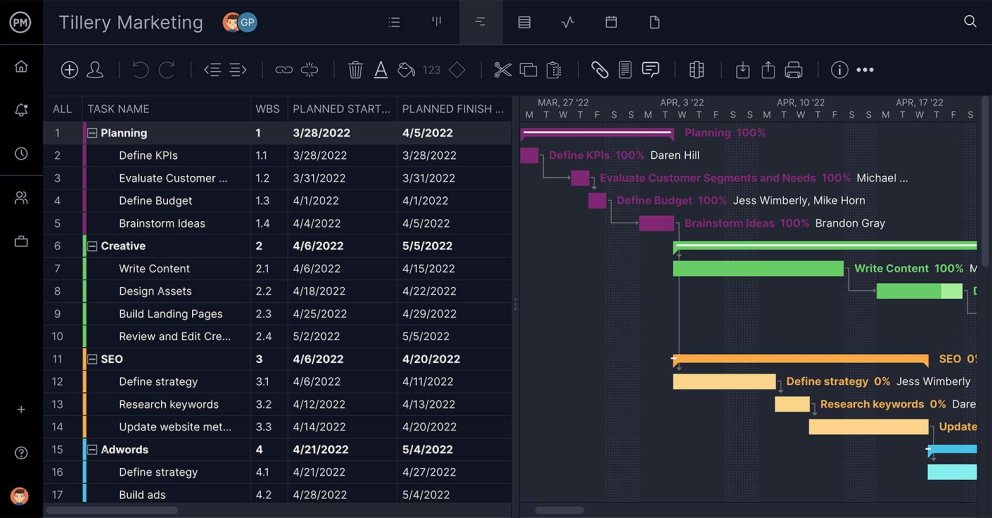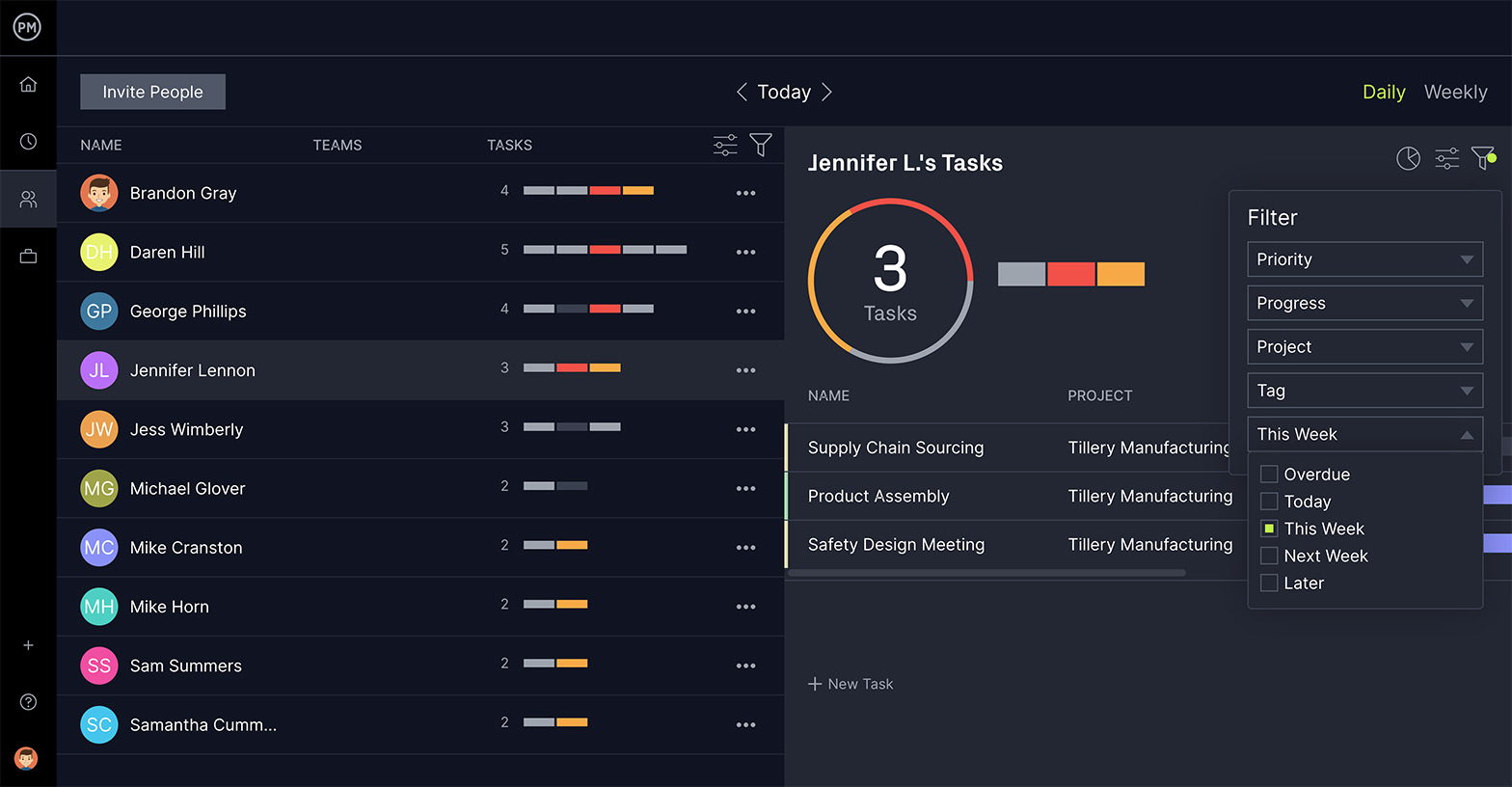Communication is the foundation of every good relationship, friendship or partnership. It’s fundamental to the way projects work, too. Without good communication, things can become overcomplicated. Remember the old Abbott and Costello sketch, “Who’s On First”? It’s a timeless illustration of a communication breakdown—now imagine that happening over a year-long project. Frightening!
Even if you’ve built an airtight project plan, you’re not getting past your first milestone without proper communication management.
What is Project Communication?
Project communication is the process of identifying key information that will be shared with team members and stakeholders throughout a specific project. This includes listing out stakeholders and identifying team members that will be on project communications. It’s key to outline how communication recipients will receive project updates, the frequency they’ll receive them, as well as the points during the project they’ll receive them.
As you develop your project plan, you’ll need to create your communication plan that goes along with it, so everyone has the necessary context and can do their job effectively at each step.
Your points of communication, along with your list of communication contacts, will be in between each of those steps as you’ll need to get their edits, comments and ultimately, their approvals.
Why is Communication Management Important?
Communication management is everything. You can’t just create a project plan and hope everyone sticks to it. Once you create the plan and get everyone on board, either you or a key contact you assign should be the one managing the plan throughout the entirety of the project. For example, a project manager can manage the deliverables on the agency side, and an account manager can manage all communications on the client-side, working as a tag team to make the project successful.
To ensure solid communication management throughout a project, a communication management plan should be created. The benefits of a communication management plan are five-fold:
- A written framework that both client/stakeholders/team members can reference. This can help in case there is any need for mediation—you have a written paper trail you can refer back to. It can also be beneficial for accounts payable to reference in case there are gaps in time tracked for the project.
- The plan itself will manage expectations from stakeholders to not anticipate a finished project before the deliverables have been tested for quality assurance.
- The points at which communication is shared allow both stakeholders to provide valuable feedback on the project process as well as the final product, and give team members a chance to brainstorm ideas together, bridging the divide between the two groups.
- It allows all involved to better discover risks and issues early on.
- It helps to eliminate the need to hold unnecessary meetings on the books, saving both time and money.
Understanding why communication management matters might sound like a given for any organization. But you would be surprised.
205.6 billion emails are sent every day, worldwide, yet only a third of those are actually opened. Additionally, Inc.com recently published a report that showed communication barriers across corporations in the United States and the U.K. cost corporations $62.4 million annually, on average in lost productivity. On the flip side, that same report showed “companies with leaders who possess effective communication skills produced a 47 percent higher return to shareholders over a five-year period.”
Communication can be bolstered by having an online project collaboration tool, like ProjectManager. ProjectManager lets managers roll out project plans, and then disseminate information to team members at the right time for the right task. Tasks allow for comments, attachments, embedded links, descriptions, to-do lists and more, so everyone gets the directions right the first time.

Tips & Techniques for Better Communication Management
So, now we understand why communication management matters. But how do we do it in a way that effectively cuts down on lost productivity time?
Here are some tips & techniques to ensure your communication management plan is performing at optimal levels.
- Include a description of the project landscape in your original plan: Give your project a background including the organization’s short-term and long-term goals, who your stakeholders are, who your team members are, how much budget will be involved, what resources you will need and how much time the project is expected to take. Include objectives as well as the project vision to ensure that the background isn’t just an outline, but a robust, fully-developed and communicated plan so that you can better generate project buy-in.
- Assign an owner of the communication process: As we previously mentioned, when you’re an agency working with a client, your communications owner is typically going to be the account manager. If your project is internal with a more centralized stakeholder team, then your communications owner can be the VP of Operations, the VP of Development or even the project manager themselves.
- Include a review process: At which points will you send out communications? How often? How many milestones will be involved, and what data sets are necessary for a performance review? Setting up a formalized review process will ensure that no one will miss a beat when it comes time to assess the project.
- Set up a system for messages to be delivered: Are you using project management software or Microsoft Excel? Will you be communicating by Slack, Skype, or just email? Include all of this in your plan so that everyone knows the best way to make contact.
- Manage your meetings: This pairs along with creating a stakeholder management plan. Meetings can be a waste of time (and a lot of the time, they can be better said in an email). Make sure your meetings only include the stakeholders who will be involved in the decision-making process and then create an agenda for each meeting for everyone to follow. This will help the group to stay on task and on topic.
Communication Management Don’ts
There are many ways in which good communication management can save your project from disaster and keep everything working at optimal levels. But what happens when leadership (or the project communication owner) displays ineffective methods of, well, communicating? Your project can quickly fall into peril.
Here is some communication management faux pas to avoid:
- Don’t be passive-aggressive: This one should be obvious, but you’d be surprised. Refusing to speak directly to a co-worker, team member or stakeholder can limit the project’s progress entirely. Passive aggression can also look like one is avoiding a task or a project because of the people involved. Passive aggression in the workplace can be the cause of missed deadlines, wasted time lost revenue and more.
- Don’t micromanage the project process: Micromanagement is damaging to any work environment in a myriad of ways; it increases health risks, affects employee turnover, decreases productivity and slows down project progress. Trust your team members and your stakeholders to deliver results on time and on budget, and you’ll see a happier, more effective product outcome, too.
- Don’t rely on electronic communications: A lot can be lost over text or email. You miss out on facial expressions, tone of voice, and can thus misunderstand what is being requested. Additionally, while meetings slow down workplace productivity, a deluge of emails can have the same effect. Remember that the best ways to communicate, especially during project milestones, are face-to-face.
- Don’t forget to document everything: The only way to properly review the success of a project is by looking back at the data via documentation. With documentation, you can see who did what, which tasks were delivered when, and how much the project cost overall.
ProjectManager Helps with Communication Management
Communication management isn’t easy. The most effective leaders are personal, rely on specific documentation for informed decision-making, delegate often and speak with as much clarity as possible. ProjectManager has the tools you need to make communicating across multiple levels easy and efficiently, so no time is wasted and no words are minced.
Collaborating with team members has never been this simple with our cloud-based Gantt charts. Assign tasks and their due dates, link them to dependencies and see it all on one screen. Plus, team members, stakeholders and partners can upload documents, deliverables and comment on any task at any stage of the project if you so choose.

ProjectManager is great for teams looking to communicate more effectively. When one team member updates a task, notifications are sent to the right people at the right time. Not only that, but it makes the review process easy with our all-in-one performance tracking summary page. Teams can see what everyone is working on and if they need any help.

Managing communications for the duration of a project is never simple. But with ProjectManager, you’ll unlock award-winning software that’s committed to helping teams collaborate effectively across multiple platforms. Sign up for our free 30-day trial today.


